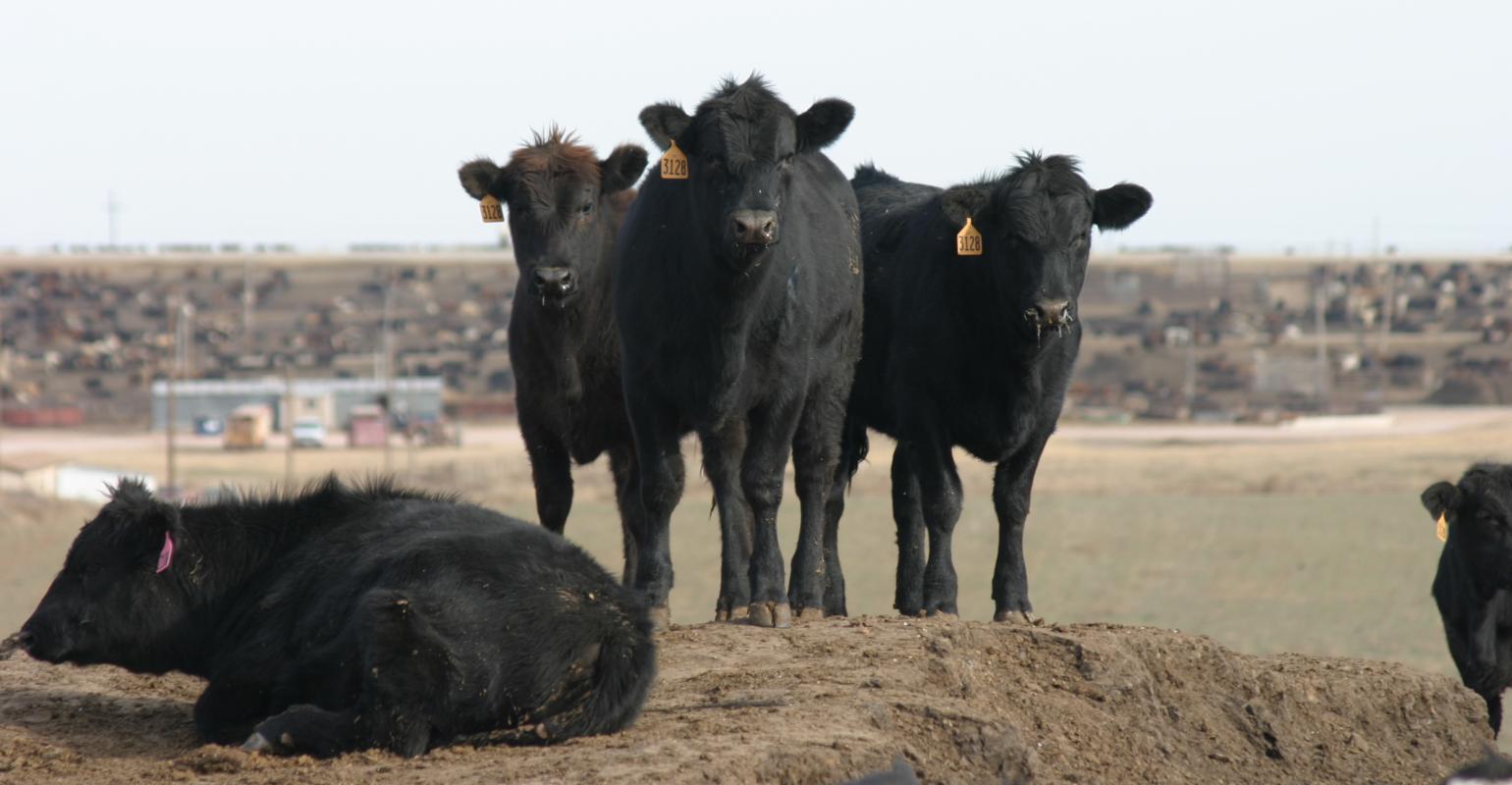
Beef Buzz News
A.J. Tarpoff Provides Medical Explanation for Cattle Deaths in Kansas
Fri, 17 Jun 2022 10:13:19 CDT
 After the strange heat event in southwestern Kansas this last weekend killing thousands of feedlot cattle, Senior Farm and Ranch Broadcaster, Ron Hays, visits with Kansas State University extension beef veterinarian, Dr. A.J. Tarpoff, to give his expertise on how unusual weather conditions can impact cattle health.
After the strange heat event in southwestern Kansas this last weekend killing thousands of feedlot cattle, Senior Farm and Ranch Broadcaster, Ron Hays, visits with Kansas State University extension beef veterinarian, Dr. A.J. Tarpoff, to give his expertise on how unusual weather conditions can impact cattle health.
"This weekend, we had a two-day stretch of pretty extreme conditions for our cattle," Tarpoff said. "What happened essentially was a number of things."
For starters, Tarpoff said there was a temperature spike, which is normal for Kansas, and the robust cattle in the area can tolerate high temperatures. But the temperature, Tarpoff said, was only part of the story.
Tarpoff said cattle can be impacted by heat stress because of temperature, humidity, wind speed, and solar radiation.
"Beginning Saturday and continuing through Sunday, even in the evening hours, we had a spike in humidity, which is quite rare for western Kansas, which has a pretty arid environment," Tarpoff said. "Most importantly, the winds died down, so all of a sudden we had a situation of high temperature and humidity with no wild speed, which seldom happens in western Kansas."
It was almost a perfect storm of a multitude of different factors, Tarpoff said, that led to a pretty severe issue.
"We have some monitoring tools through the Kansas Mesonet that showed some pretty extreme animal comfort indices beginning Saturday through Sunday with really minimal nighttime cooling hours," Tarpoff said.
Tarpoff said nighttime cooling for cattle is essential for tolerating heat stress. Cattle need at least six hours in cool temperatures to release any heat they accumulated during the day. Unfortunately, he added, they didn't have the opportunity to do so.
When facing heat stress, Tarpoff said body condition plays a role as well.
"Not all cattle are affected the same way due to heat stress," Tarpoff said. "Condition is a big factor, however, so is haircoat."
Because of the mild spring in southwestern Kansas, Tarpoff said cattle did not get the opportunity to acclimate to some of these summer conditions.
"Cattle can acclimate to just about any environment on planet Earth when given the proper time," Tarpoff said. "We may have still had some animals with a little bit longer hair coat that may have not completely shed off from the winter months just because it hasn't been that stressful. Their bodies hadn't told them to do that yet."
If cattle had previously fought with bovine respiratory disease, Tarpoff said they will have scarring in their lungs which would have made them more at risk during this unusual weather event.
"Cattle dissipate heat," Tarpoff said. "Their physiology is amazing and that really speaks towards their adaptability."
Cattle accumulate heat during the day, Tarpoff said, and release it during the nighttime cooling hours by using evaporative cooling through their respiratory tract.
"They will consume more water, they pant, they breathe a little bit harder, they breathe more rapidly and that helps essentially blow off the heat they have accumulated," Tarpoff said.
Cattle rely on their respiratory tract for cooling, Tarpoff said, because they don't sweat very efficiently like other species.
"They really rely on that respiratory tract," Tarpoff said. "If there has been previous insults of scarring where it can't be as effective, they won't be able to dissipate the heat like a normal animal."
Since cattle must use the respiratory tract for cooling, Tarpoff said if it is not working at the best of its ability, they would be more susceptible.
"This was a pretty regional issue," Tarpoff said. "Most of southwestern Kansas was impacted by this event."
The impacted area is one of our major feeding cattle meccas, Tarpoff said, so not every animal in that region succumbed to the issues. Some cattle were lost, he added, but the vast majority were saved.
"There were some losses, but I really got to tip my hat to all the employees and all the managers that have really put in the time and effort," Tarpoff said. "It was all hands-on deck to put in and implement some of their heat mitigation strategies and it really pays off."
As long as the traditional Kansas breeze keeps blowing and we have some nighttime cooling hours, Tarpoff said cattle will move on from this situation and adapt quickly for the rest of summer.
Click the LISTEN BAR below to listen to Ron Hays and A.J. Tarpoff as he breaks down the unfortunate cattle deaths in Kansas.
The Beef Buzz is a regular feature heard on radio stations around the region on the Radio Oklahoma Network and is a regular audio feature found on this website as well. Click on the LISTEN BAR below for today's show and check out our archives for older Beef Buzz shows covering the gamut of the beef cattle industry today.
WebReadyTM Powered by WireReady® NSI
Beef News






